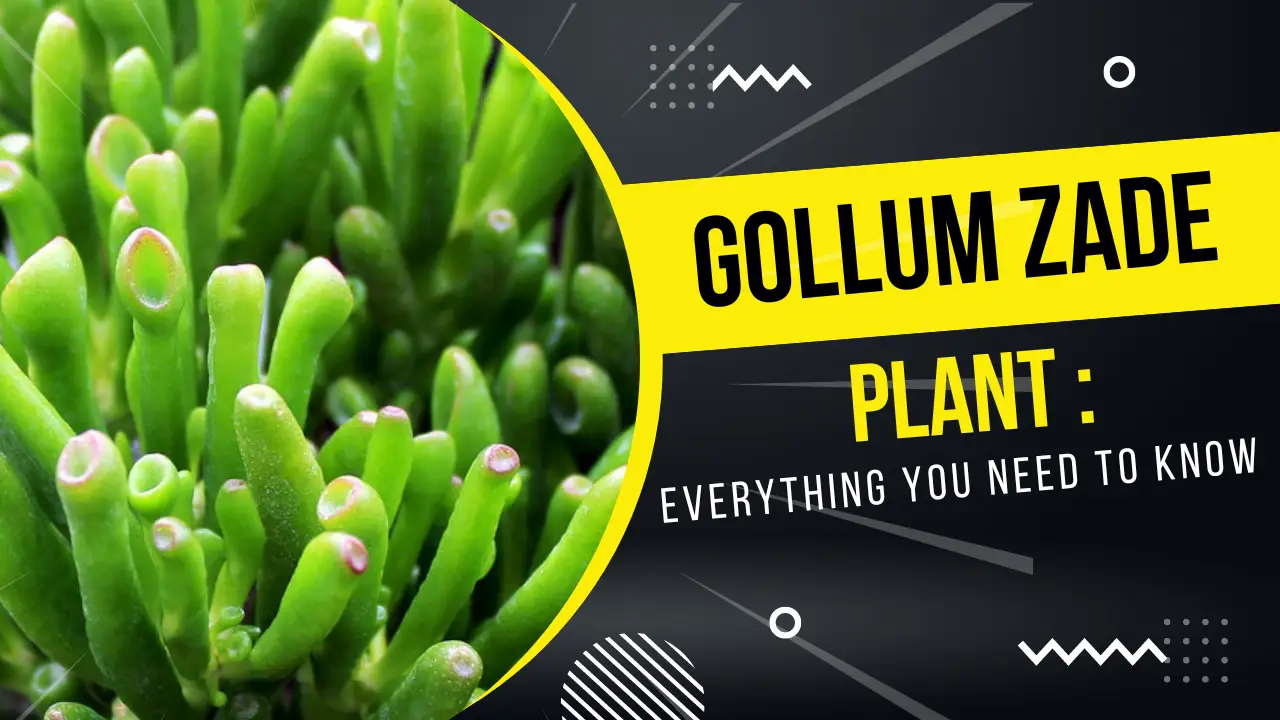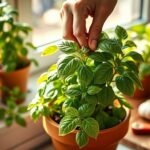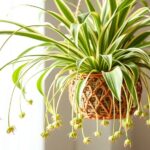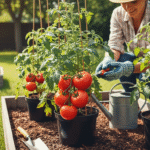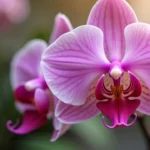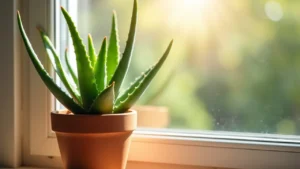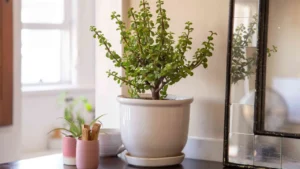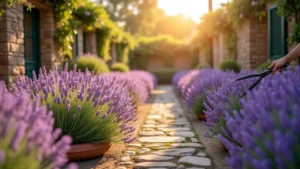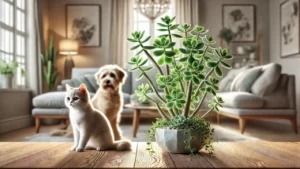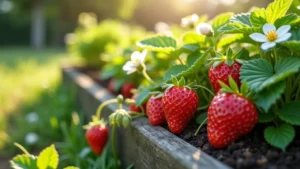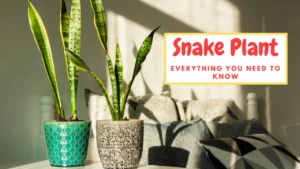We all know that plants spruce up our houses in the best possible manner. Be it them adding color to your living room or improving the environment of your home. Bonsai is the perfect fit for this and one such bonsai that will serve the purpose is the jade plant.
We know that you must be confused with over 50 options to choose from. This article here talks about a wide variety of jade, that also works like a pop culture reference, the Gollum jade plant!
Here is everything that you need to know about having a Gollum jade in your house or garden.
Table of Contents
Gollum Jade Plant Overview
One of the jades to have a pop culture reference in its name, the Gollum jade derives its name from its protruding finger-like foliage.
This type of jade has tubular leaves that are red at the tips. It is because of this unique shape that it is also called “Finger Jade”, “Hobbit’s pipe jade” and “Trumpet Jade.”
The plant is known to have elongated, tubular leaves with puckered end that appears like suction cups. The tips usually have a reddish tinge and the long leaves are green. The flowers that bloom is star-shaped and white or pink.
During the winter season, the plant is full of pink-white blooms. The plant stands out because of the unique contrast the pink, white, and green hold against each other and bring a pop of color to the house.
The plant thrives during the autumn-winter period and in seaside gardens. The changes in temperature, dryness, and nutrition levels are responsible for changing the color of the foliage.
In addition to this, the plant is quite tough and resilient. It is drought-resistant and needs watering only when the top soil feels dry.
How to care for them?
Like any other indoor plant, you must know how to care for your indoor ornaments in the best possible manner. And with tiny little beauties like these, no matter how resilient they are, we must know what is the right thing to do and when.
1. Light
When it comes to lighting, jades love to get at least 4 hours of direct morning sunlight per day and but when it comes to the scorching sun in the afternoon, it is strongly discouraged.
So if you see yellow or brown spots starting to appear on your plant, transfer them somewhere with less exposure to the sun or cover them with some cloth or umbrella to keep them safe from the intense heat and prevent them from getting sunburned.
Gollum Jades can be grown with ease either in a pot indoors or in a garden, as long as they get enough light for them to grow happily but not too much to cause them stress. To be specific, indoor Jade plants, such as the Gollum, need to be placed near a windowsill to maintain the vibrancy of their color.
But when they are being grown outdoors, the Jade plant needs to be introduced slowly to time in full sun, before leaving them together with your other succulents.
2. Soil
The soil you plant your jade in is where its roots reside and you need to be extremely particular about what you grow your plant in. In the case of a jade plant, a succulent-specific blend is your best bet.
Ideally, the soil that houses your jade should have a neutral to slightly acidic pH level, and you should drain it well to prevent excessive moisture from accumulating and causing fungal growth in your plant.
In case your local nursery is out of a succulent-specific blend, you can use an all-purpose blend by adding some perlite to the mix. Also a piece of advice for the vessel – pick a terracotta or clay vessel to help absorb extra moisture from the soil.
3. Water
Like all other plants, working on a schedule might be a little harmful in the case of jade plants too. During the spring and summer, water your plant often so that their soil is moist but not wet, this can be ensured by using well-drained soil.
Reduce the watering during the winter season to prevent root rot. To keep the soil moist, water from beneath by letting the plant sit in a saucer of water but make sure to tip off any excess water from the pot after letting it stay for a few minutes at most.
In the summer months, you can water your Gollum Jade as often as every 7-10 days. When the weather is a little cooler down during the spring and fall seasons, go ahead and cut back on watering to every 10-14 days.
If your plant doesn’t get any rain at all during winter then you water it at least once a month or every 2-3 weeks, depending on how dry the soil gets.
Be sure that you don’t overwater or underwater the plant or the plant will get wrinkled.
4. Dormancy
During the months of fall and winter, Gollum Jade goes dormant. This time causes them to slow down or entirely pause their growth during the said months. You have to make sure that you cut back on the watering as they wouldn’t need much compared to the other season (spring and summer).
In simpler words, it’s ideal to only water them once or twice throughout their dormancy period or wait for the soil to fully dry before giving it another drink.
5. Temperature
Your jade plants will prefer average household temperatures ranging from 65 to 70 degrees Fahrenheit. At night and during the winter season, jade plants can handle lower temperatures, up to 55 degrees Fahrenheit but make sure that you don’t test your plant a lot.
They should never be kept in temperatures below 50 degrees Fahrenheit for a prolonged period.
6. Fertilizer
A common mistake that most of us make is underfeeding our succulents, especially during the growing season. For the best possible results, feed your jade plant a controlled-release fertilizer at the beginning of the season or weekly with a weak liquid solution.
Make sure that the fertilizer you use is a balanced mix in 20-20-20 at one-quarter strength on mature plants, and one with lower nitrogen concentration for younger plants.
7. Potting and Repotting
Jades don’t need to be repotted frequently. Typically, you can do this every 2 to 3 years for small plants, and for the bigger ones, every 4 to 5 years would do. Generally, a 4-inch or 6-inch pot works just fine for moderately-sized jade plants, and try and opt for a clay or terracotta pot that can help absorb extra moisture.
Also, make sure the soil is dry before you repot the plant. Repotting needs to be done on a priority basis only when you see that your plant has started outgrowing the pot that was its home.
8. Propagation of Gollum Jade Plants
For Gollum jades, propagation is fairly easy and can be done by cutting or removing one of the finger-like leaves and replanting it in soil. The said leaf will then begin to grow roots and will produce a new plant in itself.
The reproduced plant will be a clone of the original and have the same DNA and characteristics.
Preparing for propagation
Exposure to sufficient sunlight – A Gollum jade plant, like most other jades, needs a fair amount of sunlight. They are known to benefit greatly from roughly 4 hours of the morning sun, with exposure to indirect light for the rest of the day.
If your Gollum jade’s leaf fingers are beginning to feel a little too dry and turn brown or yellow then you may be giving it too much sun.
Once you get a Gollum jade for yourself, let it get used to its spot in the house before you start trying to propagate it. The spot you choose for it may or may not be the best, and it may struggle to survive if you start chopping leaves off to propagate immediately as it steps into your home.
Make sure the finger leaves of the jade are plump and entirely green before you think about cutting or removing them for propagation. Any leaves that look wrinkled or yellowing on your Gollum should not be considered for the propagation process.
Make sure it has enough water – Gollum jades, like a lot of other jades, do not need watering every day. This is what makes them a perfect addition to your plant family, the fact that they are so low maintenance.
However, your plant will need watering more frequently in spring and summer, and less in winter and fall. The plants, as was mentioned before, go dormant in winter and are less likely to need water during the said time.
Hotter climates will definitely require more watering as the water in the soil will evaporate faster. Likewise, in colder climates, the water stays in the soil for a longer period. Make sure to check the soil with a finger test before watering.
If the top two inches of the soil feel dry and coarse, add a splash of water.
The right kind of soil – Gollum jades ideally need a type of soil that is specific to the succulents. You can easily find this type of soil at your local nursery or online.
The potting soil is usually made up of 1 part peat moss, 3 parts coarse sand, and 1 part organic matter if you need to compose it yourself. Each element helps the plant grow in the best possible manner.
Ensuring your Gollum jade has the right amount of nutrients and proper drainage will help it survive the propagation process. The peat moss and organic matter in the soil will ensure that the nutrients the plant needs to regrow are available to your jade, while the sand helps with drainage.
Pay attention to the flowers – When your Gollum jade begins to bloom, it usually is a good sign that the plant is mature enough, to begin propagation. A plant will only flower when it has enough nutrients to bloom and thrive.
Although Gollum jades commonly reproduce through natural leaf propagation they can also produce seeds in the flowers, although the process becomes longer in the said case.
Rooting hormone – A substance known as the rooting hormone can be applied to the leaf that will help it begin the process of growing roots. Dip the end of the leaf or stem cutting into rooting hormone to help speed up the entire process of the cutting. Rooting hormones are available in powder, liquid, or gel form.
A new pot – not unlike the mature plant, a propagated Gollum jade will need well-draining soil. Going ahead and sticking the cutting and hardened leaf into a suitable soil will ensure that it has the right water levels, nutrients, and space to begin growing its roots and establishing itself.
As the leaf establishes its roots in the soil, it is important to give it indirect light. The leaf, since it is new, will be far more sensitive to light than a mature plant and will benefit from not being in direct sunlight.
As the plant starts to mature, you can consider moving it back into a similar spot to the original plant.
Starting the propagation
As was mentioned before, the plant can be propagated from a leaf cutting. These are simple steps for growing your own Gollum jade plant at home.
1. Make a leaf cutting. Cut a small cluster of leaves from your well-established Gollum jade plant. Choose a branch that is composed of healthy, fat leaves. Allow the cutting to dry for about two to three days until the cut end develops a callous.
2. Prepare a container. Fill a small pot or container that has the right amount of drainage holes with well-draining soil meant for succulents, which should have some perlite and coarse sand in it. Gollum jade is a very drought-tolerant plant and will not need much water to thrive.
3. Plant your cutting. Plant the newly obtained cutting in your container. Surround the cutting with enough soil to help it stand upright. Leave your container in a warm spot that is out of direct sunlight to encourage new growth and not harm it.
Newly planted Gollum jade plants tend to do better than indoor plants. Once the plant has firm roots, you can move it outdoors or to a larger container, where it can acclimate to a tie in full sun.
Conclusion
Like most other varieties of jades, Gollum jades are a great and satisfying succulent to grow. Their unique shape happens to make them a great addition to your living room and an amazing conversation starter.
Propagating a Gollum jade is a lot easier than with other plants, and can be done at home by creating a lot of ruckuses.
Make sure that when you start, you have the right tools and a mature plant and you can be well on your way to making more and more Gollum jades. And why just go on spending so much money on gifts when you can grow plants on your own and gift them to your loved ones?
FAQs
Q1. Is the plant toxic for cats?
A common succulent plant found in most households – the Jade plant is considered toxic to cats if ingested, however, the toxicity is considered mild and self-limiting that can be resolved without treatment.
The most common symptoms in the case of intoxication are vomiting, lethargy, decreased appetite, and uncoordinated stumbling.
Q2. Is the plant better suited for indoors or outdoors?
Crassula Ovata ‘Gollum Jade’ is a plant that can be grown both indoors and out. The most important thing for any pant owner is to provide the jades with a well-draining potting mix and adequate sunlight.
They also need to be protected from frost and too much water for proper growth.
Q3. How frost-hardy are the plants?
This variety of jade can tolerate mild frost and slightly freezing temperatures as long as they are not face said issues for long periods. If you are in USDA hardiness zones 9-10, you can get away with leaving the plant outdoors all year long.
Q4. Should I soak my Jade Plant before repotting?
Since Jade Plants are succulents, they are sensitive to watering, so it’s best not to soak them during the repotting process. But if the plant is firmly stuck in a pot that’s too small, soaking may be the only option. Just make sure that you don’t water it right after repotting.

